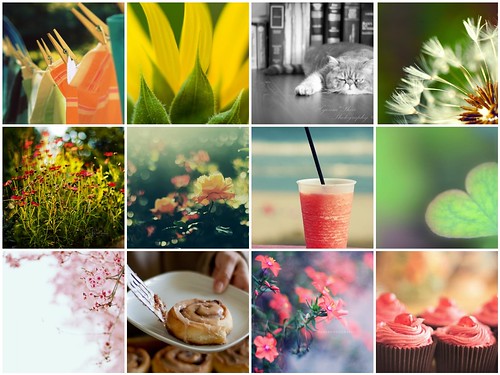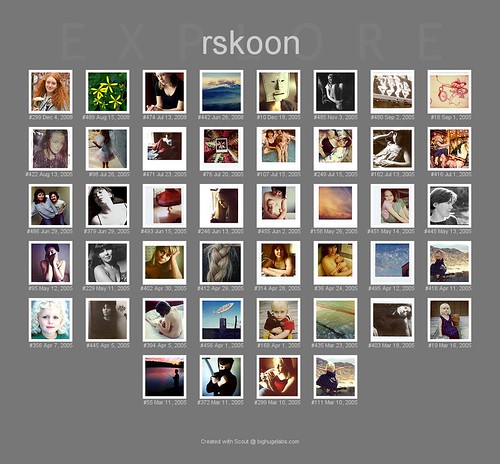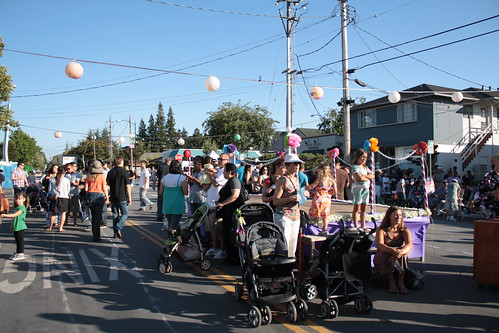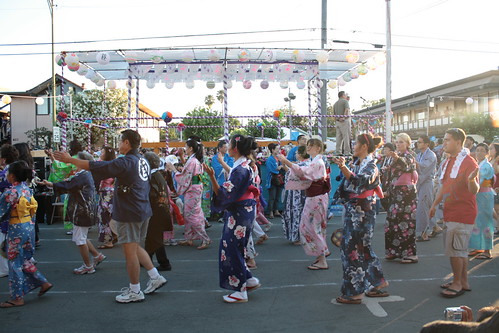things i love thursdays
Image by ginnerobot
sooo many good ones this week! I am especially loving seeing what flowers are springing up all over the place.
Please take some time to visit these pictures & enjoy them too
1. Untitled, 2. Going green, 3. the boss., 4. March 20th - is the 1st day of spring for 2009, 5. Beauty of whatever kind, in its supreme development, invariably excites the sensitive soul to tears, 6. Poor, dear, silly Spring, preparing her annual surprise!, 7. Strawberry daiquiri., 8. Be The Valentine of Our Mother Earth!! 情人节2009 - 爱我们的地球, 9. and if you can find someone to love the you you love, well that's just fabulous., 10. homemade, 11. A life without love is like a year without summer., 12. Cooking is like love. It should be entered into with abandon or not at all...
Created with fd's Flickr Toys.
In Explorer
Image by rskoon (Richard)
1. Flower Child, 2. Rudbeckia laciniata, 3. Hannah in the window, 4. Big fire south of Big Sur, California, 5. Man in the mask, 6. Windowlight on girl in chair, 7. Foster and Kleiser, 8. Kid's bike,
9. Poloroid transfer of Hannah, 10. Little girl, 11. Reading in the afternoon, 12. Double exposure, 13. Early family portrait in our first pool, 14. After the swim -- business as usual!, 15. Suzanne, 16. Carousel!,
17. Starting our lives together..., 18. Untitled, 19. New skirt, 20. My Daughter, 21. In mother's arms, 22. Day on the lake 3, 23. While her brother was being dropped off..., 24. Untitled,
25. Veil, 26. Bare shoulder, 27. Laurie, 28. Braid, 29. My Muse, 30. First Bath, 31. Sky next to the Lawrence Art Center, 32. Zabriskie Point 2,
33. She's all done up, 34. chinese fan, 35. Alone with the newborn, 36. Catfishing over Kansas, 37. Kangaroo, 38. Racing to the finish, 39. Watching from the sofa, 40. Hannah in her purple dress,
41. Fishing at sunset, 42. Ninja, 43. Viewing some pictures in the digital camera, 44. Flying over Zabriskie Point 3
Created with fd's Flickr Toys.
San Jose Japantown Obon Festival - June 10, 2010 (Saturday) - 05
Image by raider3_anime
(Yes, I know, I took a LOT of pictures... I took multiple shots, you're getting the best of 260+ photos, most of them multi-sequence shots...)
Let's Obon Odori! (Yeah, my own kind of Engrish, but I'm cool with it, apologies in advance, nonetheless...)
This two-day event was presented by San Jose Buddhist Church Betsuin, and the church was open to the public both days. (Unfortunately, I didn't get a chance to breakaway to tour...)
Food, fun, festivities, games, and a general good time to be had...
Referened from Terry Watada, "Bukkyo Tozen", HpF Press, 1996:
"Obon is a Japanese Buddhist festival that is held annually either in mid-July (as in Toronto) or August. It is a time when the souls of our dead ancestors are said to return home. According to Buddhist legend, one of Sakyamuni Buddha’s disciples, Mokuren or Moggallana, looked for his dead mother with his supernatural powers. He finally found her in agony, suffering for her past selfishness, in the Realm of Hungry Ghosts. Mokuren tried to help his mother, but unfortunately, he was unable to save her. Mokuren asked Sakyamuni Buddha how he could help his mother and was told that he must make offerings of food and drink to the many priests who were completing their summer retreat in the area and hold a memorial for his mother on July 15th. Through these actions, Mokuren’s mother was saved, and he and his fellow disciples began to clap their hands and dance in joy. This was the origin of Obon and Obon Odori, commemorating the lives of our loved ones who have passed away before us.
For those who are not familiar with Bon Odori, it might sometimes seem complicated, but they are easy, rhythmic dances with repetitive steps…sort of like Japanese line dancing! It is said that every region in Japan has its own particular dances and kinds of music. Sometimes fans (the folding sensu, or the round uchiwa), tenugui (cotton towels), sticks, or castanets (Yotsutake – literally translated as “four bamboos” - or Kachi kachi - for the sound they make) are used. Hand gestures and movements show different aspects of life, such as digging for coal, fishing or harvesting rice, or even aspects of nature, such as blooming flowers or flowing rivers."
San Jose Japantown Obon Festival - June 10, 2010 (Saturday) - 08
Image by raider3_anime
(Yes, I know, I took a LOT of pictures... I took multiple shots, you're getting the best of 260+ photos, most of them multi-sequence shots...)
Let's Obon Odori! (Yeah, my own kind of Engrish, but I'm cool with it, apologies in advance, nonetheless...)
This two-day event was presented by San Jose Buddhist Church Betsuin, and the church was open to the public both days. (Unfortunately, I didn't get a chance to breakaway to tour...)
Food, fun, festivities, games, and a general good time to be had...
Referened from Terry Watada, "Bukkyo Tozen", HpF Press, 1996:
"Obon is a Japanese Buddhist festival that is held annually either in mid-July (as in Toronto) or August. It is a time when the souls of our dead ancestors are said to return home. According to Buddhist legend, one of Sakyamuni Buddha’s disciples, Mokuren or Moggallana, looked for his dead mother with his supernatural powers. He finally found her in agony, suffering for her past selfishness, in the Realm of Hungry Ghosts. Mokuren tried to help his mother, but unfortunately, he was unable to save her. Mokuren asked Sakyamuni Buddha how he could help his mother and was told that he must make offerings of food and drink to the many priests who were completing their summer retreat in the area and hold a memorial for his mother on July 15th. Through these actions, Mokuren’s mother was saved, and he and his fellow disciples began to clap their hands and dance in joy. This was the origin of Obon and Obon Odori, commemorating the lives of our loved ones who have passed away before us.
For those who are not familiar with Bon Odori, it might sometimes seem complicated, but they are easy, rhythmic dances with repetitive steps…sort of like Japanese line dancing! It is said that every region in Japan has its own particular dances and kinds of music. Sometimes fans (the folding sensu, or the round uchiwa), tenugui (cotton towels), sticks, or castanets (Yotsutake – literally translated as “four bamboos” - or Kachi kachi - for the sound they make) are used. Hand gestures and movements show different aspects of life, such as digging for coal, fishing or harvesting rice, or even aspects of nature, such as blooming flowers or flowing rivers."
San Jose Japantown Obon Festival - June 10, 2010 (Saturday) - 13
Image by raider3_anime
(Yes, I know, I took a LOT of pictures... I took multiple shots, you're getting the best of 260+ photos, most of them multi-sequence shots...)
Let's Obon Odori! (Yeah, my own kind of Engrish, but I'm cool with it, apologies in advance, nonetheless...)
This two-day event was presented by San Jose Buddhist Church Betsuin, and the church was open to the public both days. (Unfortunately, I didn't get a chance to breakaway to tour...)
Food, fun, festivities, games, and a general good time to be had...
Referened from Terry Watada, "Bukkyo Tozen", HpF Press, 1996:
"Obon is a Japanese Buddhist festival that is held annually either in mid-July (as in Toronto) or August. It is a time when the souls of our dead ancestors are said to return home. According to Buddhist legend, one of Sakyamuni Buddha’s disciples, Mokuren or Moggallana, looked for his dead mother with his supernatural powers. He finally found her in agony, suffering for her past selfishness, in the Realm of Hungry Ghosts. Mokuren tried to help his mother, but unfortunately, he was unable to save her. Mokuren asked Sakyamuni Buddha how he could help his mother and was told that he must make offerings of food and drink to the many priests who were completing their summer retreat in the area and hold a memorial for his mother on July 15th. Through these actions, Mokuren’s mother was saved, and he and his fellow disciples began to clap their hands and dance in joy. This was the origin of Obon and Obon Odori, commemorating the lives of our loved ones who have passed away before us.
For those who are not familiar with Bon Odori, it might sometimes seem complicated, but they are easy, rhythmic dances with repetitive steps…sort of like Japanese line dancing! It is said that every region in Japan has its own particular dances and kinds of music. Sometimes fans (the folding sensu, or the round uchiwa), tenugui (cotton towels), sticks, or castanets (Yotsutake – literally translated as “four bamboos” - or Kachi kachi - for the sound they make) are used. Hand gestures and movements show different aspects of life, such as digging for coal, fishing or harvesting rice, or even aspects of nature, such as blooming flowers or flowing rivers."
Tidak ada komentar:
Posting Komentar